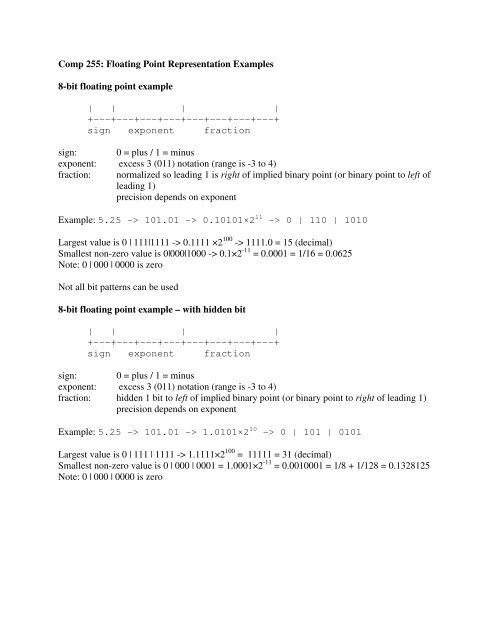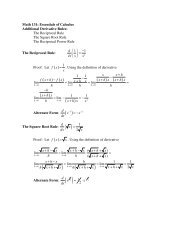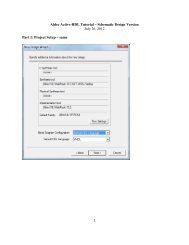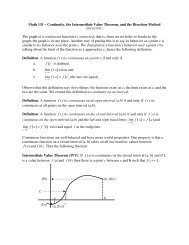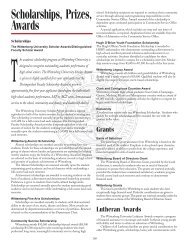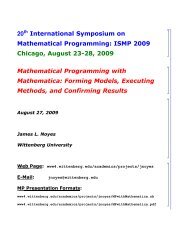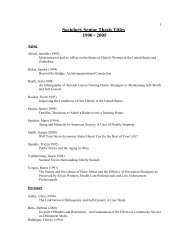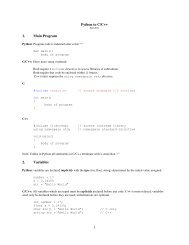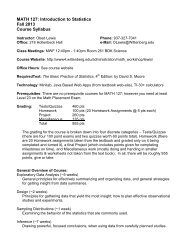Comp 255: Floating Point Representation Examples 8-bit floating ...
Comp 255: Floating Point Representation Examples 8-bit floating ...
Comp 255: Floating Point Representation Examples 8-bit floating ...
You also want an ePaper? Increase the reach of your titles
YUMPU automatically turns print PDFs into web optimized ePapers that Google loves.
<strong>Comp</strong> <strong>255</strong>: <strong>Floating</strong> <strong>Point</strong> <strong>Representation</strong> <strong>Examples</strong><br />
8-<strong>bit</strong> <strong>floating</strong> point example<br />
| | | |<br />
+---+---+---+---+---+---+---+---+<br />
sign exponent fraction<br />
sign: 0 = plus / 1 = minus<br />
exponent: excess 3 (011) notation (range is -3 to 4)<br />
fraction: normalized so leading 1 is right of implied binary point (or binary point to left of<br />
leading 1)<br />
precision depends on exponent<br />
Example: 5.25 -> 101.01 -> 0.10101×2 11 -> 0 | 110 | 1010<br />
Largest value is 0 | 111|1111 -> 0.1111 ×2 100 -> 1111.0 = 15 (decimal)<br />
Smallest non-zero value is 0|000|1000 -> 0.1×2 -11 = 0.0001 = 1/16 = 0.0625<br />
Note: 0 | 000 | 0000 is zero<br />
Not all <strong>bit</strong> patterns can be used<br />
8-<strong>bit</strong> <strong>floating</strong> point example – with hidden <strong>bit</strong><br />
| | | |<br />
+---+---+---+---+---+---+---+---+<br />
sign exponent fraction<br />
sign: 0 = plus / 1 = minus<br />
exponent: excess 3 (011) notation (range is -3 to 4)<br />
fraction: hidden 1 <strong>bit</strong> to left of implied binary point (or binary point to right of leading 1)<br />
precision depends on exponent<br />
Example: 5.25 -> 101.01 -> 1.0101×2 10 -> 0 | 101 | 0101<br />
Largest value is 0 | 111 | 1111 -> 1.1111×2 100 = 11111 = 31 (decimal)<br />
Smallest non-zero value is 0 | 000 | 0001 = 1.0001×2 -11 = 0.0010001 = 1/8 + 1/128 = 0.1328125<br />
Note: 0 | 000 | 0000 is zero
IEEE 754 Standard for Single Precision <strong>Floating</strong> <strong>Point</strong> Numbers<br />
|s| exponent | fraction |<br />
+-+-+-+-+-+-+-+-+-+-+-+-+-+-+-+-+-+-+-+-+-+-+-+-+-+-+-+-+-+-+-+-+<br />
3 3 2 2 2 2 2 2 2 2 2 2 1 1 1 1 1 1 1 1 1 1 0 0 0 0 0 0 0 0 0 0<br />
1 0 9 8 7 6 5 4 3 2 1 0 9 8 7 6 5 4 3 2 1 0 9 8 7 6 5 4 3 2 1 0<br />
Sign:<br />
Exponent:<br />
0 = plus / 1 = minus<br />
excess 127 (01111111) 00000000 and 11111111 are reserved patterns<br />
Therefore exponent range is -126 .. +127<br />
Fraction: hidden 1 <strong>bit</strong> to left of implied binary point (or binary point to right of leading 1)<br />
precision depends on exponent<br />
5 basic types<br />
Non-zero normalized numbers (exponents between -126 and +127)<br />
Clean zero: exponent and mantissa all 0’s (note +0 and -0)<br />
Infinity: exponent = 11111111, fraction all 0’s (+ and – infinity)<br />
NaN (not a number): exponent = 11111111 and fraction is not all 0’s<br />
Denormalized: exponent = 00000000 (-126) and fraction is actual value w/o/ hidden <strong>bit</strong>


